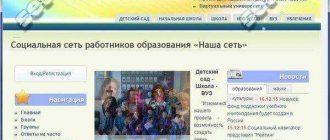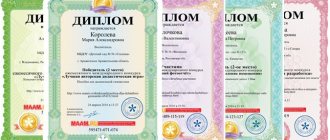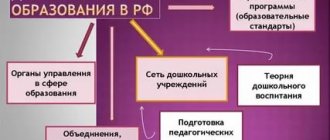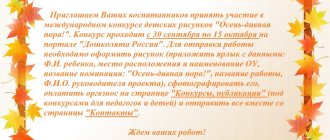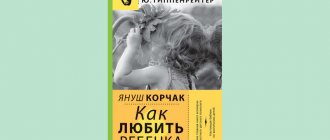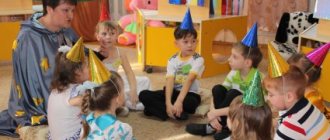It is never easy to do work with quality and with soul. Especially if it concerns the education and upbringing of children. Anyone, even the most talented teacher, needs like-minded people who can encourage each other and help with valuable advice. To solve such problems, professional communities are created, one of which was the nsportal ru project.
Social network of educators ns portal (“Our Network”) is a resource for professional communication of teachers working at all levels of the educational process (from kindergarten to university). The project provides the participant with the opportunity to create their own mini-site, exchange useful information, ideas, methodological developments with colleagues, learn the latest news, relax and laugh at funny situations that often happen in the lives of teachers. More than three hundred thousand participants have already joined the network , posting almost two million educational materials! In addition, the best works are duplicated in the “nsportal.ru” group on VKontakte.
Registration on a social network
If an account in “Our Network” has not yet been created, then you must go through the procedure of registering a new user. It is simple and does not require much time.
- First, the user chooses a login . It is best if it includes the full name and surname of the participant. This combination is unique (i.e. the chance of matching another person’s login is small) and simplifies the search for the desired network member.
- Next, fill in the field with the email address to which notifications about project events will be sent.
- Then you need confirmthat you are not a robot and enter the answer to the question in the appropriate field. There is a small nuance here - the answer must be entered in words, not in numbers (otherwise the system will consider it incorrect).
How to make a slide show - the best programs
After completing the above steps, a letter will be sent to the specified address with a link to complete registration. After clicking on it, the user finds himself on his profile page.
Here the user specifies a password and configures the function of sending notifications by email. There is also an opportunity to upload a photo , greet colleagues, etc.
The profile also displays information about the user’s current activity – alerts, messages, number of friends, etc.
There is an opportunity to create your own blog , thanks to which the author can share thoughts and ideas with fellow professionals, rather than with a diverse audience of the Internet.
Algorithm for registration and creation of an Internet page on the NS PORTAL website
Alexander Myasnikov will answer questions from users of the Infourok project
We'll look into everything that worries you.
June 19, 2022 19:00 (Moscow time)
Description of the presentation by individual slides:
Algorithm for creating an Internet page
It is recommended to work in the browser: Chrome: https://www.google.ru/chrome
In the search bar we type: “Social network of educators” or “nsportal” NSPORTAL
Ivanov Ivan Ivanovich 4
A message will be sent to your email address: User credentials Ivan Ivanovich Ivanov on the website Social Network of Education Workers Thank you for registering on the Social Network of Education Workers. To complete registration, log into the site by clicking on the link below or copy and paste it into the address bar of your browser: https://nsportal.ru/user/reset/817786/1474282261/XdKmnbR6Er2aSP5L77otLcDXIGzQjWdYPjPfmGG7Gpg On the page that opens, you can come up with a password for yourself. — Website team Social network of educators
Hello! I am very glad to welcome you to my website. Fields marked with a red asterisk are required. After filling in all fields, click “Save”
After the message “Changes saved” appears, your website is considered registered. Next, go to the “Data for mini-site” field.
Fields marked with a red asterisk are required. After filling in all fields, click “Save”
In order to make changes or additions to your page, you need to enter the “Edit” section. An editing window will appear. Don't forget to save after making changes.
After filling out all the fields you will receive a page approximately like this.
You can post your material on the page in two ways: Click on one of the lines in the portfolio (depending on the type of work) Select the appropriate line in the navigator You can perform these actions only from your personal page
Fill in the fields and save
If you need to make changes to the added material, click “edit”. Be sure to save after editing
- all materials
- Articles
- Scientific works
- Video lessons
- Presentations
- Notes
- Tests
- Work programs
- Other methodological materials
- Lagutkina Olga AleksandrovnaWrite 4822 09/29/2016
Material number: DB-221758
- Computer science
- Presentations
Add original materials and receive prizes from Infourok
Weekly prize fund 100,000 RUR
- 29.09.2016 503
- 29.09.2016 3414
- 29.09.2016 2199
- 29.09.2016 939
- 29.09.2016 858
- 29.09.2016 1515
- 29.09.2016 187
Didn't find what you were looking for?
You might be interested in these courses:
Leave your comment
Responsibility for resolving any controversial issues regarding the materials themselves and their contents is taken by the users who posted the material on the site. However, the site’s editors are ready to provide all possible support in resolving any issues related to the work and content of the site. If you notice that materials are being used illegally on this site, please notify the site administration using the feedback form.
All materials posted on the site were created by the authors of the site or posted by users of the site and are presented on the site for informational purposes only. Copyrights for materials belong to their legal authors. Partial or complete copying of site materials without written permission from the site administration is prohibited! Editorial opinion may be different from those of the authors.
How to create a mini-site
A popular function of Our Network is the creation of personal pages (mini-sites). The mini-site accumulates the author’s contact information, his areas of interest and achievements, useful links, teaching materials, as well as links to groups and publications on the network. To create your own mini-resource, select the “My mini-site” button in the menu on the left side, and then fill in the profile fields .
For the convenience of the user of the national portal, there is a menu on the left side of the page. It allows the participant to fill out and edit his website, communicate in groups and forums, view the news feed, etc.
Http://nsportal.ru/detskiy-sad/raznoe/2015/10/15/detskaya-initsiativa
Methods and directions of supporting children's initiatives in accordance with the requirements of the Federal State Educational Standard for Education.
Initiative:
1. Internal motivation for new activity, undertaking, initiative. A leading role in any action.
2. The ability to take independent, active action; enterprise.
3. Active in undertakings, active in promoting undertakings, launching new businesses, involving people around them.
You could say initiative
– internal motivation for new actions, involving surrounding people in this activity, taking on a leadership role.
To develop initiative you need:
1. Give simple tasks (remove the fear of “I can’t handle it”), develop initiative in children.
2. Give tasks that are interesting or where the person has a personal interest in doing something.
3. Support initiatives (be prepared to pay for mistakes and failures).
4. Teach how to respond competently to your own mistakes.
If we want our children to believe in themselves, develop and experiment, we must reinforce initiative, even when it involves mistakes.
In the educational process, the child and adults (teachers, parents, medical personnel) act as subjects of pedagogical activity, in which adults determine the content, tasks, methods of their implementation, and the child creates himself and his nature, his world.
Children are provided with a wide range of activities specific to preschoolers, the choice of which is carried out with the participation of adults with a focus on the interests and abilities of the child.
Adults need to learn to tactfully cooperate with children: do not try to show and explain everything at once, do not immediately present any unexpected surprises, noise effects, etc. It is necessary to create conditions so that children can guess a lot on their own and enjoy it.
Of the year
The priority area for the manifestation of children's initiative at this age is research activity with objects, materials, substances; enriching your own sensory experience of perceiving the world around you. To support children's initiative, adults need to:
1) provide children with independence in everything that does not pose a threat to their life and health, helping them realize their own plans;
2) celebrate and welcome even the most minimal successes of children;
3) do not criticize the results of the child’s activities and himself as an individual;
4) develop in children the habit of independently finding interesting activities for themselves; teach to freely use toys and aids; introduce children to the group, other premises and employees of the kindergarten, and the territory of the site in order to increase independence;
5) encourage children to perform a variety of actions with objects aimed at familiarizing themselves with their qualities and properties (inserts, dismountable toys, opening and closing, selection by shape and size);
6) maintain the child’s interest in what he examines and observes at different moments;
7) establish simple and understandable standards for group life, strictly follow the rules of behavior by all children;
 spend all routine moments in an emotionally positive mood, avoid rushing and pushing children;
spend all routine moments in an emotionally positive mood, avoid rushing and pushing children;
9) to maintain initiative in productive activities, at the direction of the child, create images or crafts for him;
10) keep all toys and materials in an accessible place;
11) encourage physical, playful, visual, and constructive activities, and express approval of any result of the child’s work.
Of the year
The priority area for the manifestation of children's initiative is play and productive activities. To support the initiative of a 3-4 year old child, adults need to:
1) create conditions for the implementation of each child’s own plans and ideas;
2) tell children about real and possible future achievements;
3) celebrate and publicly support any successes of children;
4) encourage children’s independence in every possible way and expand its scope;
5) help the child find a way to achieve his own goals;
6) promote the desire to learn how to do something and maintain a joyful feeling of increasing skill;
7) during classes and in everyday life, be tolerant of the child’s difficulties and allow him to act at his own pace;
 do not criticize the results of the children’s activities, as well as themselves. Limit criticism exclusively to the results of productive activities, using game characters as the subject of criticism;
do not criticize the results of the children’s activities, as well as themselves. Limit criticism exclusively to the results of productive activities, using game characters as the subject of criticism;
9) take into account the individual characteristics of children, strive to find an approach to shy, indecisive, conflict-ridden, unpopular children;
10) respect and value every child regardless of his achievements, strengths and weaknesses;
11) create a positive psychological microclimate in the group, show love to all children equally: express joy when meeting, use affection and warm words to express your attitude towards each child, show delicacy and tolerance;
12) always provide children with the opportunity to realize their plans in creative playful and productive activities.
Years
The priority area for the manifestation of children's initiative at this age is cognitive activity, expanding their information horizons, and playing activities with peers. To support children's initiative, adults need to:
1) encourage children to make their own conclusions, treat their attempts carefully and with respect;
2) provide opportunities for children to fulfill their desire to change clothes and dress up, to try on different roles. Have in the group a set of attributes and elements of costumes for dressing up, as well as technical means that ensure children’s desire to sing, move, and dance to music;
3) create conditions that provide children with the opportunity to construct a “home” from various materials, a shelter for story games;
4) if necessary, condemn the child’s negative action face to face, but do not allow criticism of his personality and his qualities;
5) do not allow dictatorship or imposition in the choice of game plots;
6) it is mandatory to participate in children’s games at their invitation (or with their voluntary consent) as a partner, an equal participant, but not the leader of the game. Manage the game indirectly (receiving the phone, introducing a secondary character, combining two games);
7) involve children in decorating the group for various events, discussing different possibilities and proposals;
 encourage children to form and express their own aesthetic assessment of what they perceive, without imposing the opinion of an adult on them;
encourage children to form and express their own aesthetic assessment of what they perceive, without imposing the opinion of an adult on them;
9) involve children in planning the life of the group for the day, rely on their desires during classes;
10) read and tell stories to children at their request, turn on music.
Years
The priority area for the manifestation of children's initiative in older preschool age is non-situational - personal communication with adults and peers, as well as information and cognitive initiative.
To support children's initiative, adults need to:
1) create a positive psychological microclimate in the group, equally showing love and care for all children: express joy when meeting, use affection and warm words to express your attitude towards the child;
2) respect the individual tastes and habits of children;
3) encourage the desire to create something according to one’s own design; draw children's attention to the usefulness of the future product for others or the joy it will bring to someone (mom, grandmother, father, friend)
4) create conditions for a variety of independent creative activities of children;
5) if necessary, help children solve problems in organizing the game;
6) involve children in planning the life of the group for the day and for the longer term. Discuss joint projects;
7) create conditions and allocate time for independent creative, cognitive activities of children according to their interests.
Years
The priority area for the manifestation of children's initiative at this age is learning, expanding the spheres of their own competence in various areas of practical subjectivity, including instrumental activity, as well as informational cognitive activity. To support children's initiative, adults need to:
1) introduce an adequate assessment of the result of the child’s activity with simultaneous recognition of his efforts and indicating possible ways and means of improving the product of the activity;
2) calmly react to the child’s failure and offer several options for correcting the work: re-execution after some time, completion, improvement of details. Tell children about the difficulties you experienced when learning new activities;
3) create situations that allow the child to realize his competence, gaining respect and recognition from adults and peers;
4) contact children with a request to demonstrate their achievements and teach them to achieve the same results of their peers;
5) maintain a sense of pride in your work and satisfaction with its results;
6) create conditions for various independent creative activities of children according to their interests and requests, provide children with a certain time for this type of activity;
7) if necessary, help children solve problems when organizing a game;
 plan the life of the group for the day, week, month, taking into account the interests of the children, try to implement their wishes and suggestions;
plan the life of the group for the day, week, month, taking into account the interests of the children, try to implement their wishes and suggestions;
9) present products of children's creativity to other children, parents, teachers (concerts, exhibitions, etc.).
Literature:
https://nsportal.ru/detskiy-sad/raznoe/2015/10/15/detskaya-initsiativa
Material library
The library of the network of educators is quite voluminous and contains:
- educational materials for all disciplines;
- recommendations for working with parents;
- scenarios for holidays (including sports);
- developments in the management of educational institutions;
For ease of searching for materials, the library is structured by educational level :
- preschool (“Kindergarten”);
- school (with a separate subsection for primary school);
- secondary (primary and secondary vocational education);
- higher education (HEI).
Disabling updates in Windows
After moving to the section of interest, the user is presented with a form for searching and sorting works.
For kindergarten, the INES portal for educators provides the ability to search by the name of the material, type of activity and age group. School developments can be filtered by name, subject, type and class. Materials for vocational education can be searched by name, field of study and type, and for higher education - in the sections “Science” and “Type of material”.
Smirnova Elena Vladimirovna | Kindergarten teacher website
A child is a rational being; he knows well the needs, difficulties and obstacles of his life.
Not despotic orders, not imposed discipline, not distrustful control, but tactful agreement, faith in experience, cooperation and life together. Janusz Korczak
My teaching activities are carried out in accordance with the Federal State Educational Standard, which establishes a system of norms and requirements for the content of education and training, and for children to master key competencies in a kindergarten setting.
Kindergarten is the step from which, one might say, a person’s career begins. And the higher the level of organization of a preschool institution, the higher the potential capabilities of each of our graduates.
About Me
I have been working with the team at the Alyonushka kindergarten since 1996. I have the highest qualification category. In 2009, I graduated from the Non-state educational institution of higher professional education “Eastern Economic and Legal Humanitarian Academy”, Ufa with a degree in Pedagogy and methods of preschool education, qualification as an organizer-methodologist of preschool education. Where I acquired a wealth of knowledge in all scientific fields, thereby helping me in my future work as a teacher. With great interest, I learn and study new technologies in the field of education, constantly educate myself, and use modern literature. In the age of information technology, it has become possible to disseminate experience on the Internet: I publish materials on educational sites. My students actively take part in municipal, regional, republican, all-Russian, and international Internet Olympiads and competitions. I share my work experience within regional and republican seminars for educators and municipal methodological associations. I contribute to improving the quality of education, improve educational methods, and convey to teaching teams the experience of the practical results of my professional activities.
My credo:
I came to kindergarten - smile at the threshold,
Everything that you give to your children will come back to you in the end.
Love for children, Respect for parents!
Books that shaped my inner world
“The most precious thing a person has is life. It is given to him once, and he must live it in such a way that there is no excruciating pain for the years spent aimlessly, so that the shame for a petty and petty past does not burn, and so that when dying, he can say: all his life and all his strength were given to the most beautiful thing in the world - ... ..” N. Ostrovsky “How the steel was tempered”
“How to Love a Child” - Janusz Korczak
My view of the world
The world around us is only a reflection of our perception and our thoughts. What we see, perceive, evaluate, is largely determined by our view of the World and our attitude towards it.
Immanuel Kant once said: “There are two difficult things in the world – to educate and to govern.” His future, his worldview, his whole life depend on who will raise a child for 3-6 years.
Working with children, you feel the fullness of life, your invaluable capabilities, love, interest, you are looking for something new, interesting, unknown, thereby constantly improving your professional level.
My achievements
My achievements are the successes of my students! A modern teacher today needs to work in a competitive environment, new reporting requirements, strive to improve personal qualifications and be able to independently evaluate the results of their activities. I strive to improve my skills, using the achievements of pedagogical science and best practices, and master modern innovative technologies and methods. I try to constantly improve my professional skills, professional growth, and participate in all events directly related to my work.
My portfolio
“First we teach our children, then we ourselves learn from them. Whoever doesn’t want to do this is behind his time” J. Rainis.
Search the site and audio recordings
In addition to the listed functions of the enes portal resource, other opportunities . For example, the “Site Search” button, thanks to which the search is carried out in all sections of the library.
“Audio recordings” are highlighted as a separate menu item. Having entered the section, to search for the necessary materials, the user can use a filter containing the fields: “Title”, “Section” and “Abstract”.
Thus, the social network of educators nsportal.ru provides interested and creative teachers with new opportunities for professional communication, searching for necessary information and sharing experiences, and therefore helps make the educational process interesting and modern.
Social website of teaching staff
- home
- Teachers
- Library
- Personal Area
- Help
Register and create your personal website !
What is it for
We provide the opportunity to create a teacher’s personal website, publish a portfolio, post educational materials and publications in the media, and organize distance learning.
The service is designed specifically for the needs of educators and takes into account all the requirements for certification of teachers.
A teacher’s personal page may contain: personal information, contacts, information about the education received, information about work experience and professional achievements, files with own developments and educational materials.
What are you getting
Get to know the opportunities that users of the Pedagogical Resource service receive.
A personal page on the Internet, accessible to visitors from anywhere in the world in a service registered as a media outlet.
All users automatically receive a document indicating that the teacher has a personal website on the Internet. See sample certificate.
Free opportunities for website owners: publishing materials in the media, presenting generalized experience, posting educational materials.
Possibilities
Personal pages of teachers created on the Pedagogical Resource website comply with methodological recommendations for the creation and development of websites and (or) pages of websites of teaching staff on the Internet, which are approved and recommended by the Ministry of Education of the Russian Federation.
basic information
The teacher can provide complete information about himself: name, place of residence, qualification category, academic degree, academic title, general and teaching experience, place of work, address of the institution, telephone number, position held, disciplines taught, information about additional workload.
Contacts
Publication of various methods of communication: telephone, email, Skype, Telegram, Instagram, links to profiles on social networks (Odnoklassniki, VKontakte, Facebook) and a personal channel on YouTube.
Feedback
Receiving messages through the feedback form, which is available to all site visitors. Settings allow you to turn feedback on and off on the teacher’s page at any time.
Guest book
A tool for interacting with site visitors. Publication of reviews of the teacher’s work by students or their parents (legal representatives).
Education
Information about professional education, direction of training and (or) specialty of the teacher. Possibility of indicating information about professional retraining and advanced training.
experience
Information about work experience allows you to talk about your professional experience, indicating the period of work in the organization in your position.
Portfolio
Publication of the results of professional activities, results of students mastering educational programs, diplomas and certificates for participation in competitions and olympiads, etc.
Photo gallery
A means of demonstrating the professional skills of the teacher, the educational process and organized events.
Documents and publications
Publication of documents, educational materials, generalization of experience and scientific developments in the media (Mass Media Registration Certificate EL No FS 77-64146).
Educational materials
Publication of educational content for students: lectures, educational literature, lessons, homework and other documents.
Video materials
Placing links to video materials posted on third-party services: YouTube, Vimeo, Yandex Disk, Cloud Mail.ru, etc. Uploading video files to the portal is not possible.
Students' works
An interface for sending homework and other work directly on the teacher’s page in the “For Students” section.
How it all happens
Get to know the opportunities that users of the Pedagogical Resource service receive.
Registration
Registration of a new user on the site.
Filling
Filling the site with personal data.
Payment
Payment for website creation online or in cash.
